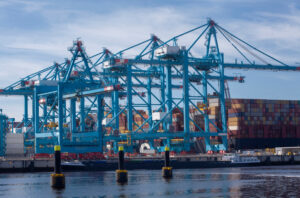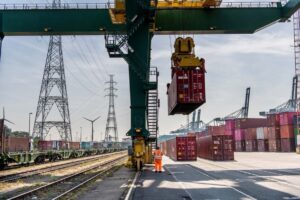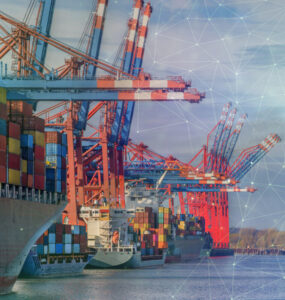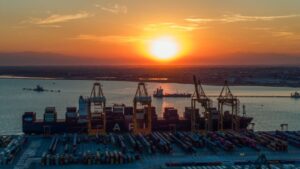As the COVID-19 Pandemic continues to stifle the global supply chain, the maritime industry is seeing more manual choke points emerge.
A few ports have closed entirely for vessels coming in virus-stricken countries inside of 14 days. Others will only let the vessels into port if the crew has a clean bill of health.
“We are likely to see more issues arise in the coming weeks as the pandemic spreads – with more people falling ill and/or coming under lock-down, ports and intermodal operators will likely face temporary worker shortages,” Lars Jensen, CEO and Partner of Sea Intelligence Consulting, noted in a recent essay.
“If we look closer at the challenges associated with the disruptions, they are caused by the physical links in the chain. Information exchange on non-digital media as well as physical processes requiring manpower on the ground.”
At this time the entire global supply chain is vulnerable, and companies are looking more closely at how their solutions can be utilised to mitigate these vulnerabilities.
These problems cannot be structurally solved in the short term – only hands-on contingency management can ease the problems right now. However, in the longer term this is also likely to accelerate a development which was already beginning to gather pace in the industry – namely that of automation, Jensen explained.
Rise in automation
Jensen predicts that once the pandemic has subsided, we are likely to see a sharp increase in the use of digital tools for information exchange to get rid of many of the paper-based processes.
In addition, there may also be an accelerated uptake in automated equipment, reducing the dependency on manual work and overall increasing resiliency.
One of these port automation examples is EagleRail Container Logistics, which automates the shuttling of containers via electric, overhead light rail, replacing short-haul drayage trucks at the port.
“The time is urgently upon the shipping and intermodal industries to ramp up investments in container handling automation, both inside and outside the port gate. The safety and security of the global supply chain as well as many milllions of lives literally depend on it,” said Mike Wychocki, CEO, EagleRail Container Logistics.
Video: EagleRail discusses autonomy in port logistics
Wychocki said, “We strongly believe that the rapid adoption of our unique EagleRail solution is more critical than ever as it directly addresses all of the potential crippling delays caused by this, and surely future, global illness-related supply chain disruptions.
“Automating the shuttling of containers via electric, overhead light rail between high-volume and repetitive nodes in the port and intermodal network will eliminate worker shortages, contamination opportunities and not be reliant of roads, chassis availabilities, gates and other manual processes.
“The EagleRail system runs 24/7 with remote crews and monitor, collecting, monitoring and sharing all data-points of location, box and seal condition, travel times, clearance-points, etc. in real time.”









